By: Natalie Wolchover Published: 07/26/2012 09:27 AM EDT on Lifes Little Mysteries
Oscar Pistorius can run a quarter mile in 45.07 seconds — fast enough to compete in the 2012 Olympic Games. He does it without feet.
Born missing the fibula bones that attach ankles to knees, the South African had to have his legs amputated halfway down his calves as a baby. Now, 25 years later, Pistorius runs on specialized prosthetics: crescent blades made of carbon fiber that attach to his knees called "Cheetah Flex-Feet." Nicknamed "the Blade Runner," he holds double-amputee world records for the 100-, 200- and 400-meter dashes. In 2007, he began competing against — and beating — world-class, able-bodied athletes.
In a few days, he will settle into the starting blocks as the first double-amputee athlete to ever compete in the Olympics, running the 400-meter dash and a leg of the 4x400-meter relay.
But amid his incredible success, some of Pistorius' opponents have objected. Late in 2007, the International Association of Athletics Federations (IAAF) ruled that his artificial limbs were actually giving him an unfair advantage — that their springiness allowed him to push off the ground more efficiently than does a normal human ankle, letting him coast along at higher speeds using less exertion than other sprinters. He was banned from able-bodied competition.
However, thanks to subsequent research and testimony led by biophysicist Hugh Herr, head of the Biomechatronics Research Group at the Massachusetts Institute of Technology, the IAAF overturned the previous ruling. Last summer, Pistorius set a personal best time in the 400-m (45.07 seconds; the world record is 43.18 seconds, held by American sprinter Michael Johnson), qualifying for the 2011 World Championships. He ran a 45.20 this year, earning a spot at this summer's Olympic Games.
So why did the IAAF change its mind? And at the highest level of competition, in races designed to test the extreme limits of human abilities, are the Blade Runner's blades really fair?
An equal footing
Herr, an inventor of advanced prosthetic limbs, says his tests show Cheetah Flex-Feet put Oscar on an equal footing with his competitors. "We did energetic tests to see how much oxygen Oscar was consuming. We looked at his rate of fatigue; we looked at biomechanics — how much force he applies, his step length and his stride frequency," Herr, who is also a double below-the-knee amputee, told Life's Little Mysteries before the World Championships last year. In all categories, Pistorius' performance followed the same trends as other top athletes. [How Do Athletes Get 'In the Zone' of Peak Performance?]
"People argued that Oscar had an unnatural rate of fatigue" — that his artificial legs gave him extra stamina, Herr said. Tests show this isn't the case. "To measure the rate of fatigue, you take a treadmill and turn it on at a particular speed. He jumps on and starts running, and you time how long he can maintain that speed. You do this at several speeds, then plot normalized speed versus duration, and you get a curve. Many sprinting athletes follow a similar curve. We found that Oscar follows the same trend." That means he got just as tired using his blades as everyone else did using their calves and ankles.
In their experiments, Herr and his colleagues found that Pistorius moves his body slightly differently than other athletes, but consumes energy and oxygen at the same rate. He swings his lightweight carbon blades back and forth a tad faster than most of his competitors swing their heavier legs, but he must also push off the ground harder to get the same thrust; overall, these factors appear to balance out.
Lastly, Herr argues that if Pistorius' prosthetics work better than biological limbs, they'd be giving a boost to other amputees, too. But Paralympic athletes have used the same technology for the past 15 years, and no one has achieved Pistorius's running times. "It's clearly because of Oscar, not the legs," Herr said.[Caster Semenya: How Sports & Science Classify Sex]
Freedom in society, fairness in sport
Regardless of what studies show — of how closely Pistorius' blades emulate the function and energy return of biological legs — some people will likely still object to him competing at the highest levels of able-bodied competition. After all, in Herr's own words, the Olympics are "an exploration of the human leg, and of the biological limits of physicality." What's his counterargument?
"The laws are written to allow people with unusual minds and bodies to have full access in society, and that includes sporting events. So we're imagining a world in which you happen to be born without fibulas, and you also happen to be the world's best athlete. You should have the freedom to become that. There also has to be fairness in sport. The answer is more technology, not less. Advances in science and technology will provide Oscar and future elite athletes with unusual bodies access to the Olympics, while maintaining fairness in sport," Herr said.
He believes artificial limbs will someday be invented that surpass the speed and efficiency of biological ones. Someday Paralympic athletes will run faster and jump higher than Olympic ones. Should future Paralympic athletes qualify for the Olympics, they'll be required to use less advanced technology that keeps them on a level playing field with able-bodied competitors.
Herr's tests show that Pistorius' carbon fiber blades may be an example of such technology. They allow Pistorius to run just as fast as he would have, had he been born with fibulas. But no faster.
Follow Natalie Wolchover on Twitter @nattyover. Follow Life's Little Mysteries on Twitter @llmysteries, then join us on Facebook.
Copyright 2012 Lifes Little Mysteries, a TechMediaNetwork company. All rights reserved. This material may not be published, broadcast, rewritten or redistributed.
